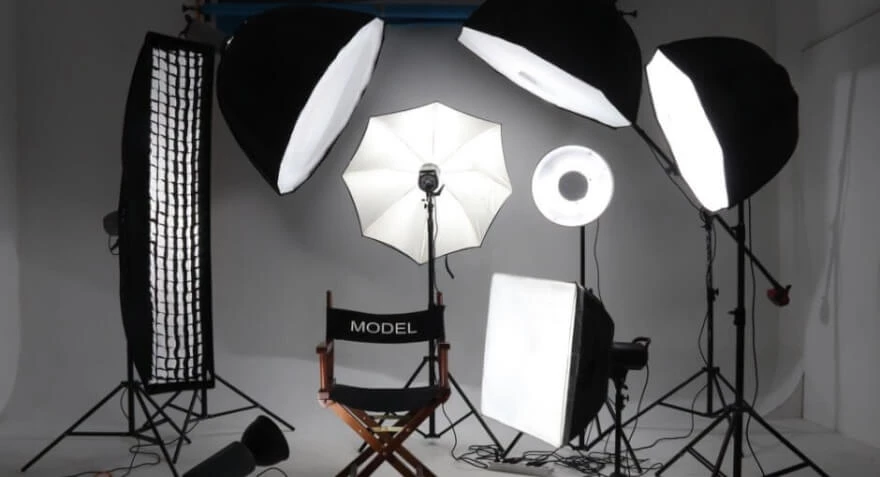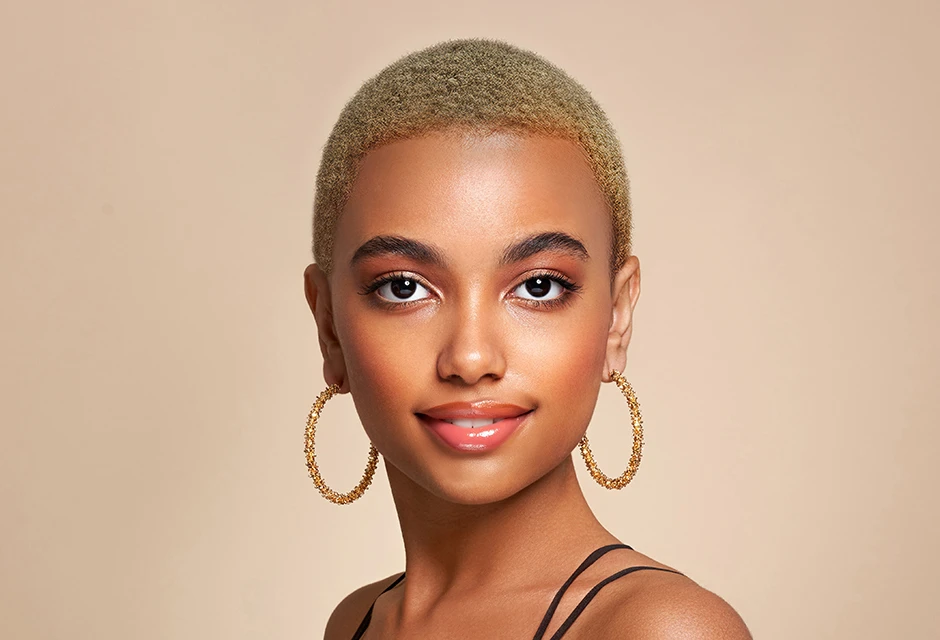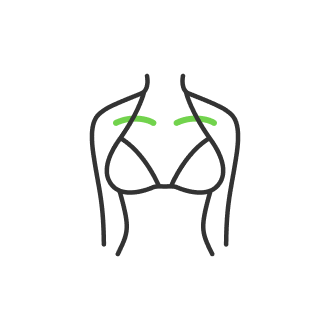How to choose the right reflector for photos?

- Choose your color type.
- What are reflector's photography frames?
- Use the top shape and size reflectors
- What are the reflector size guidelines?
- Learn the difference between the sets.
- Use photo advice.
- Create a diy photo reflector.
- What is necessary for the creation of a hand-made photo accessory?
- How to use a reflector in photography?
- Consider that the price range is quite large.
- Capture pictures using photo tips.
Light reflector is a mobile device for outdoor and studio photography and video filming. It is used to brighten up details in a scene with light reflected from a natural or artificial source.
With the help of a reflector, photographers remove or soften unwanted shadows, place the necessary light and shadow accents in the frame. Each reflector is made in the form of a frame with a stretched reflective fabric.
A reflector is most often used for photographing portraits, as well as when shooting subjects, macro photography and other tasks related to shooting static objects. This device is indispensable when filming photo models in nature. A photography reflector is more convenient to work with than other portable equipment: umbrellas, softboxes and flashes.
A reflector is useless for photographic landscapes, photo essays, and architecture. There are various types, which are used for different scopes.
Reflective option highlights shadows and gives your photo the desired hue. Reflective items include white, silver, gold reflectors.
Diffusing device softens the "sharp" shadow. The scattering reflector is transparent.
Absorbing (anti-reflector) creates a dense shadow, eliminates unnecessary reflected light. Absorbent reflector is usually black.

1. Choose your color type.
White. Reduces the intensity of reflected light, does not change color temperature, and illuminates shadows with soft light. It is designed for shooting in sunny weather, but in low light conditions such a reflector will not work. A white reflector is most commonly used.
Black. Absorbs light, providing even, deep shadows on the subject. This reflector does not change the color temperature. It is useful when shooting reflective subjects (such as jewelry) or working near reflective surfaces such as sand on a beach or a white wall. The black reflector is widely used in studio photography for a dramatic dark portrait image.
Silver. Provides a more contrasting and harsher light than a white reflector. In this case, the color temperature rises slightly, the light acquires "cold" tones. Good in low light such as cloudy weather. The silver reflector shows excellent results in sharp transitions between the illuminated and shaded areas of the subject.
Golden. Lowers the color temperature, which gives the light a "warm" hue. It is used to correct the tone of pale human skin (gives the effect of a light tan). This reflector works best when shooting with lighting that has a golden hue. In the studio, the golden reflector is almost never used.
The key tip: it is not recommended to use a silver and gold reflector in sunny weather. This will ruin the photo (the model will squint, the ink will "float"). Finally, the light reflected by such devices blinds the person.
Transparent (translucent). Reflects part of the light and scatters the transmitted light. As a result, harsh light softens. The color temperature remains unchanged.
Green and blue. Do not reflect light, but are used to create a background or substrate, which is subsequently replaced by another background in a graphics editor.
Important: when buying reflectors, pay attention to the quality of the working coating. The cheapest reflector can quickly crumble. It is better to choose products from well-known brands with a good reputation. It is worth reading the reviews of the professionals.

2. What are reflector's photography frames?
Rigid. Monolithic and sturdy construction, but not easy to carry.
Flexible. Folding option, can be compared favorably with a rigid frame in ease of transportation, but inferior in reliability.
Important: when purchasing a model with a flexible frame, evaluate the reliability of the fasteners connecting the structure. It is good if there is a braid that takes some of the load, which prolongs the life of the reflector.

3. Use the top shape and size reflectors.
Round (portrait). It is used to create an individual half-length or chest portrait. Diameter: 80 and 110 cm. The round reflector is used most often.
Rectangular (full-length) is used when shooting group and full-length portraits. Dimensions: 80x120 cm; 90x120 cm. The rectangular design is good for working without an assistant, since it is more stable than a round one.
There are also triangular and oval reflectors. The oval model 120x180 cm will be an excellent solution for full-height photography in the studio. But a small triangular model with a handle is convenient for working in the open air without an assistant. Small objects are conveniently reflected with a small round reflector.
The size of the reflector varies from 30 to 110 cm and above. The choice for this parameter depends on the size of the subject being shot. The larger the object, the larger the reflector should be. Otherwise, uniform illumination cannot be achieved. True, a large reflector requires the help of an assistant.

4. What are the reflector size guidelines?
- Small (30-40 cm) - for a large portrait (face);
- Large (82-100 cm) - for large, waist and chest photo or portrait, subject shooting (universal solution);
- 100 cm and above - for a full-length portrait.
The efficiency of a reflector is determined by the ratio of light reflection / absorption. Silver and gold models offer up to 90% efficiency (90% reflection / 10% absorption). The white reflector is 80% efficient (80% reflection / 20% absorption). But the black reflector absorbs 90%, and reflects only 10%.

5. Learn the difference between the sets.
- 2 in 1 reflector is a gold and silver reflector. It is made in the form of a frame with a material with two colors attached on each side. The easiest option.
- 3 in 1 reflector is a gold, silver, transparent reflector. It is a frame with a stretched transparent fabric. The other two reflectors are two colors of a reversible cover that is secured to the frame with a zip.
- 5 in 1 Reflector is a white, black, gold, silver and transparent Reflector. Unlike the previous set, it is supplied with two replaceable multi-colored covers. Such a complete set is found most often and is suitable for solving a wide range of tasks.
- Reflector 7 in 1 differs from the previous version by the presence of a blue and green reflector (three interchangeable double-sided covers).
Important: pay attention to the quality of the zipper in replacement covers. It has to withstand many open / close cycles. Reference points: the quality of the links (the best choice is zippers with straight and large teeth) and ease of opening / fastening.

6. Use photo advice.
Pay attention to the quality of the frame. Make sure the reflector cloth spray does not drip.
Kits "3 in 1" and "5 in 1" are good for work in the open air without an assistant. It is advisable to use a tripod that will not allow the reflector to fall from the wind. For a studio shooting, different options are used depending on the situation.

7. Create a diy photo reflector.
However, amateur photographers are not always ready to purchase professional reflectors for photographers. In this case, you can opt for a diy reflector from scrap materials. You will need the simplest things that any house has. Prepare the base for your reflector. It can be any thick cardboard or an unnecessary cutting board. You will also need foil, sheets of paper, and tape.

8. What is necessary for the creation of a hand-made photo accessory?
Take a thick piece of cardboard and foil. The foil needs to be crumpled a little, so the reflective surface will become larger. Now wrap the cardboard with foil and secure with tape. Attention, use a little scotch tape so as not to reduce the reflective properties of the foil. Now you have a home reflector. For the convenience of shooting objects of different sizes, you can make several reflectors from small to a meter high.

9. How to use a reflector in photography?
When using a reflector, you need to understand very well for the purpose of using this tool while shooting. A reflector does only what its name suggests - it reflects light. With practice, you will be able to determine the distance the reflector should be placed to in order to create the desired reflection and emphasize the cut and shadow pattern of the subject, even if it is just green grass. It is always worth remembering that nothing is better than naturalness in a photograph. Don't fool the viewer, try to reflect the light in a way that feels natural for a human eye. The sun's rays shine from above, so do not often need to use reflectors from below, since this does not always look good and justified in the frame. Shadows in the frame are not bad, but it does not have to fill in the whole image. They create volume and mood in the frame. A photo reflector can be folded according to the following algorithm. It is necessary to take the reflector with both hands by the upper arc and try to bend the reflector towards each other. Due to the special frame, the reflector will fold. It can be conveniently stored and transported. The photographer, when using a reflector, eventually finds his preferences and technique for using this device. By moving the reflector closer and away from the subject, you can adjust the amount of light. The closer the reflector is, the less space around the subject and the more close-up will have to be done. It is better to practice, working with ISO and various color reflecting surfaces.

10. Consider that the price range is quite large.
The cost is influenced by several factors, among which the key ones are functionality, size, quality, fame and popularity of the manufacturer's brand. Some are equipped with additional accessories or functions (for example, reflectors with an umbrella holder, curtains, filters) that you might not need in your work. Therefore, it may not be worth overpaying and choosing a more “modest” sample. The simplest reflectors of the same color cost from 3 USD. However, this is not very convenient, because by paying a little more, 15 USD, you can get a complete set with 5 multi-colored interchangeable panels. In order to understand where it is profitable to buy, we suggest you use the search engines online. It contains offers from various stores in your area or with delivery from nearby major cities. It is convenient to compare prices of different sellers or even models by adding them “in comparison”. In addition, before buying, we recommend that you read the reviews of the store where you plan to order the reflector. You shouldn't buy the cheapest option from a dubious seller, as you may have problems with warranty returns, shipping, and anything else. Choose a trusted provider like Nikon and Canon with high user ratings. The price, as a rule, does not differ significantly and it is better to overpay 3-5 USD, but save time, nerves and get a quality product on schedule.
Use cases and don't ignore the advantage of using reflectors, even if the photographer has little experience. It is quite easy to use and after a few photo shots you will be able to work with it with confidence.

11. Capture pictures using photo tips.
There are several nuances listed below to consider when creating photographs:
- When using a silver or gold screen, don't ask the model to look directly at it. Especially if the photo shooting takes place in the bright sun. So the hero of the photograph will be blinded. If this is a girl, then in addition to closed eyes, you can achieve spoiled makeup. Also, the distance to the model should not be too small. The easiest way to determine a sufficient distance is by experience. As soon as a beautiful cut-off pattern and sufficient reflection appears in the photo, you can stop experimenting and shoot from this distance.
- When shooting from a low point, it is better to place the reflector directly on the ground, closer to the model. This will lighten the shadows that appear on the face on a sunny day.
- If you need to take a photo in cloudy or rainy weather, the screen will help make a person's face brighter and remove ugly shadows around the eyes. For this, the reflector is placed as close to the face as possible at the very edge of the frame. The main thing is that it does not get into the photo. If the screen is located at the level of the model's chest, it beautifully and imperceptibly illuminates the face, eliminating all unnecessary shadows.
- If there are no ugly shadows on the face, you can try placing the reflector above the subject of the photograph at an angle of 90 degrees. You can also use 2 screens. Place the smaller one at the bottom, and the larger one at the top.
- The distance to the model depends on the diameter of the screen. The small one is placed as close as possible, the large one - at a greater distance.
- Invite an assistant to take photos with a reflector. But if this is not possible, you can do it on your own.

Try new accessories and do not forget to charge all batteries of your camera, to continue the shooting experience.
Co-founder of RetouchMe. In addition to business, he is passionate about travel photography and videography. His photos can be viewed on Instagram (over 1 million followers), and his films can be found on his YouTube channel.
Moreover, his profile is featured on the most popular and authoritative resource in the film industry — IMDb. He has received 51 international awards and 18 nominations at film festivals worldwide.

with RetouchMe














